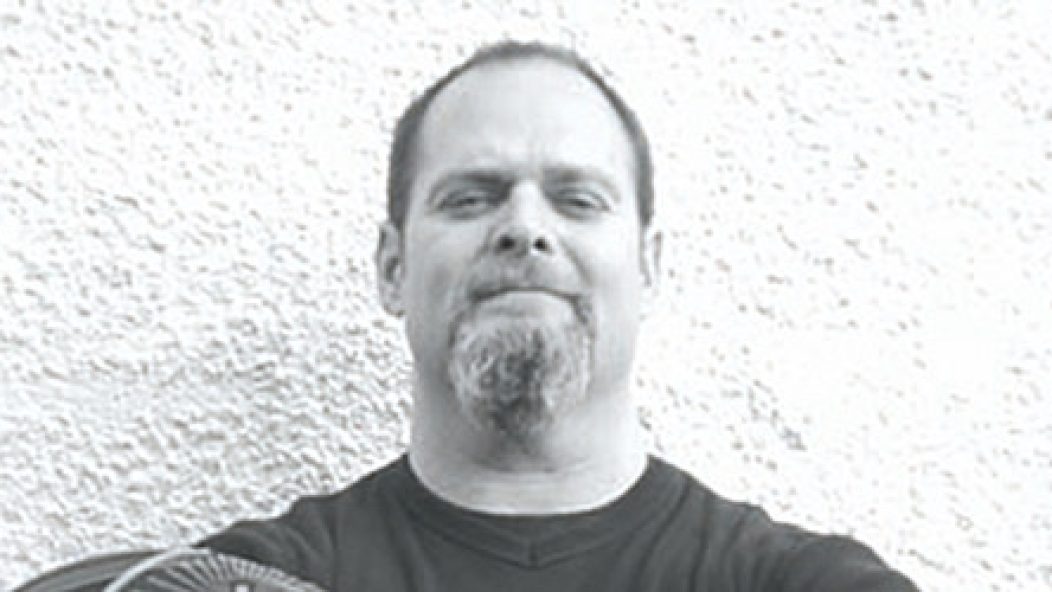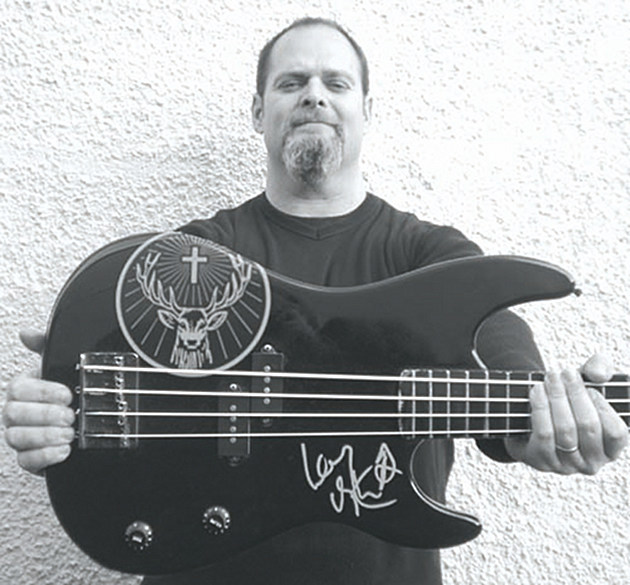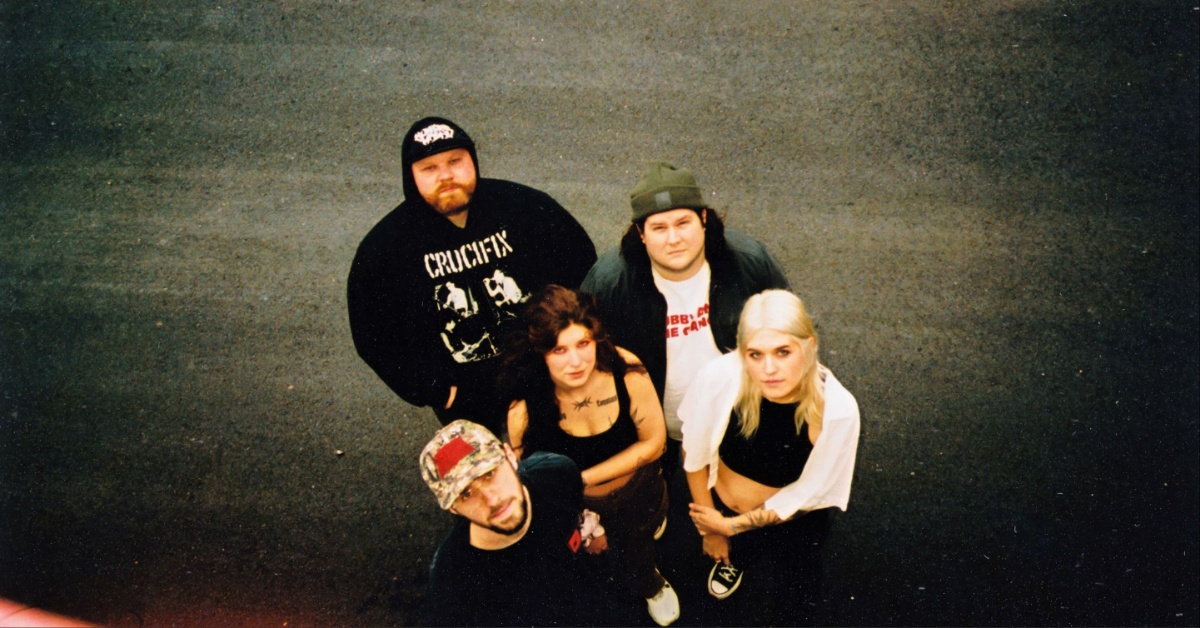
Remembering Extreme Metal With Author Joel McIver; an Interview
…
Moving allows you to take stock of all the crap you have and how fucking heavy it is. For me, the worst will always be books. Besides the basic collection of necessities (Baudelaire, Poe, the complete Akira), I have almost every big, heavy tome of a metal coffee table book in circulation. Bazillion Points Press will be responsible for my eventual back surgery. But during my latest move, I was stocking my bookshelves and realized that I no longer owned Extreme Metal.
Now listed as The Extreme Metal Handbook, Extreme Metal was an encyclopedia of underground metal in 2000. Covering death, black, thrash and doom metal, it provided all the factual information and glossy photographs a young metalhead needed to graduate to a genre snob. Coupled with the major magazines, it allowed me to discover underground artists who would’ve otherwise remained buried to me. And now, fifteen years since its publication, I realize that I not only no longer own it, but also have no idea who wrote it.
But of course it was Joel McIver. He’s a metal author extraordinaire, and has done books on Cliff Burton, Slayer, and Machine Head, as well as co-written biographies with Max Cavalera and Glenn Hughes. Extreme Metal was his first book, and he is appropriately funny and irreverent when discussing it.
…
Can you give us some context when it came to the book’s release? It came out in 2000, which means you were releasing a book on extreme metal in the heart of the nu-metal era.
First off, we’re talking about a book that was commissioned and researched in 1999, sixteen years ago as I talk to you now, so some of the finer details aren’t that fresh in my memory. That said, it was my first book and I was incredibly excited about it, so the big picture is still pretty vivid. If I recall correctly, I had suggested a whole bunch of ideas for books to various publishers, one of which was the idea of an extreme metal A-to-Z, and that happened to be the one that Omnibus Press went for. The editor, then as now a journalistic legend named Chris Charlesworth, called me and said that the concept had been discussed in a recent meeting and my pitch had fortuitously arrived soon after that. But he could just have easily asked for a book on a nu-metal band, and in fact my second and third books, which Omnibus also commissioned in 2001 and 2002, were a biography of Slipknot and a nu-metal encyclopedia, so there you go. It’s funny how quaint the whole nu-metal wave seems nowadays. At the time, a lot of traditional metalheads loved it, although I guarantee that most of them wouldn’t admit to that nowadays.
Where were you in your career at this point?
Barely started. I may be slightly off in the dates, but I think I got my first job as a staff journalist in February 1999, pitched the book in the summer and signed the deal in the autumn. The full-time job I was doing was that of production editor on Record Collector, a magazine in London for rare vinyl enthusiasts. I hadn’t written much before that and my editing skills were minimal, so at the same time as writing the book I was essentially in the middle of a boot camp training me how to be a journalist and editor. 1999 was a crazy year: I also got engaged to my now-wife (is that the right phrase?), and we bought our first house. Looking back, I didn’t really have a clue what I was doing. It all worked out fine, though.
Can you remember what you were listening to during the writing of Extreme Metal?
Mostly the bands in the book. I’d always been a fan of ‘80s thrash metal but had only recently got into death, doom and black metal. I do remember listening to Morbid Angel and Burzum on a daily basis throughout the process. I also checked out all the smaller bands in the book, largely by asking the record companies to send me the CDs in the post. I realize that sounds insane nowadays. In 1999 and 2000, mp3s weren’t easily available, and obviously there was no streaming media because we were all on crappy dial-up connections.
Did you write and pitch the book, or were you tapped by a publisher to write this collection?
I pitched the book to a bunch of publishers and Omnibus were the ones who bit. I remember that they paid me £3500 to write it and gave me another grand to do the picture research—quite a tasty sum of money for a first book back then, but hardly a life-changing amount. Obviously, my advances have gone up significantly since then, or I wouldn’t be able to pay my bills, yikes! I would have done Extreme Metal for free just to get a book out, if I’m honest. The idea of having a physical book out, with my name on it, seemed impossibly glamorous back then. Again, this is a whole generation ago in technological terms. There was no self-publishing or e-books back then. There was vanity publishing, where companies would manufacture a book for you if you paid them a lot of money, but I always regarded that as for losers who didn’t have the talent to attract a real publisher. What a snob I was, and still am to an extent.
Why do a roster/encyclopedia of bands? Why not a history of underground metal, which at that point wasn’t common but now has been done to death?
Simply because I wasn’t interested enough in doing the whole historical thing – and if I’m honest, not capable of doing it properly. I was such a rookie at the time. Also, the point was not necessarily to focus on underground metal; the book does have Black Sabbath and the Big Four in it, plus tons of major indie-label acts. Why did I put Sabbath in it? Because I was deranged.
What were the qualifications for bands to be involved in the book? Where did you draw the line for extremity, or popularity?
I defined extreme metal at the time as thrash, death, black and doom metal bands, plus a bunch of the bigger grindcore acts. That worked reasonably well. I decided to put Sabbath in under the doom category, which I’d never do now. Still, it made sense at the time. As for drawing a line for extremity, I didn’t consider doing that. The more extreme, the better, and if a band had at least the odd thrash beat in their songs, they were fair game for inclusion.
Were there any bands who maybe you snuck in just because they were your favorites? Was there a band it broke your heart not to include?
Not exactly, but I did spend extra time writing the entries of bands whose music I particularly enjoyed, and gave them more space than others. So there’s tons on Deicide and not so much on, say, Obituary, because I preferred one to the other. I also liked Body Count at the time: they were a bit of a guilty pleasure, so they got longer than they really deserved. But what the hell, it’s only rock and roll.
Were there any young or up-and-coming bands in the book who you were proud to cover before anyone else? Any that sadly didn’t live up to their reputation?
Not really any of the former, but plenty of the latter. Half of those bands are gone now. You may have seen the expanded edition of the book, imaginatively titled Extreme Metal II, which came out in 2005, five years after the first one. It’s bigger and better, with fewer of the weak jokes that populated the original book, and with quite a few of the entries weeded out if they hadn’t survived the previous five years. My later books are tons better though, because I’d found my style by then.
Did any bands lash back at you for their inclusion or exclusion?
No lashing out. Tony Lazaro of Vital Remains and Tony Dolan of Atomkraft asked me politely why they’d been excluded – the answer: I forgot to put them in – but they were totally cool about it. It’s a friendly scene, by and large, and although I’ve moved on to pastures new to a certain extent since then, I’m still friends with a lot of those musicians.
I remember the introduction was by Venom guitarist Mantas—how’d that come about? Was he the first person you asked, or were others wary of contributing?
He was pretty much the only extreme metal musician I knew well enough at the time to ask. I was really just getting started as a writer, and the social networks between musicians that exist today just weren’t around then. You could email someone via their website, if they had one, and that was it. Even MySpace was a world away when I was writing this book.
The book definitely introduced me to a shitload of bands—do you get a lot of fans gushing to you about that book?
Yes, quite a few, although most of my readers contact me after reading the Metallica, Sabbath or Slayer books I’ve done, or the autobiographies that I’ve co-written with Glenn Hughes, David Ellefson and Max Cavalera. Twenty-six books and a bestseller down the line, I’m a rather different author now than I was in 1999, but it’s fun (and a bit cringe-worthy) to look back at how I got started. Thanks for the trip down a particularly grisly memory lane!
…











